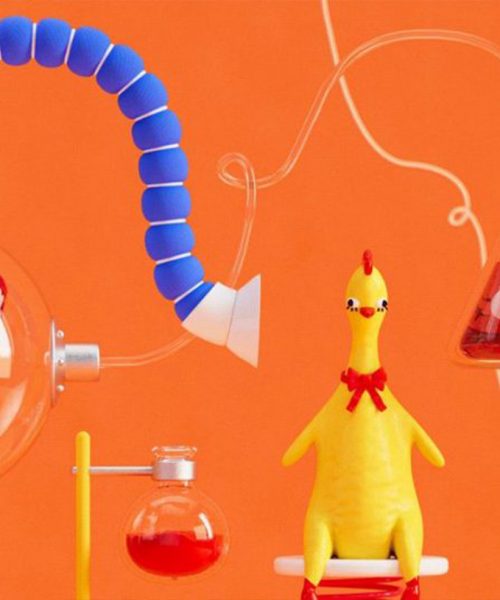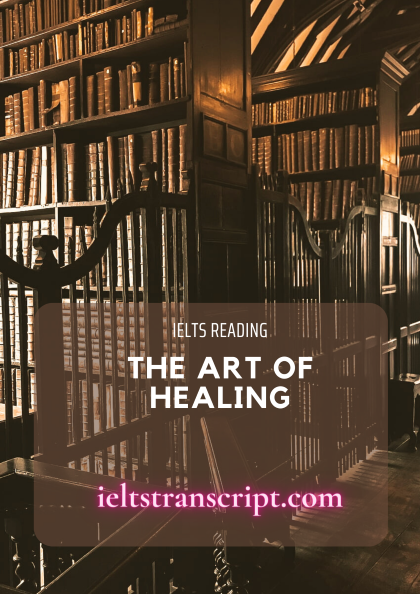- Đối với sản phẩm có giá: Sau khi chúng tôi ghi nhận thông tin đã thanh toán sản phẩm của bạn, sản phẩm sẽ được mở khóa và bạn có thể xem trực tiếp và tải tài liệu sản phẩm.
- Đối với thành viên trả phí: Bạn có thể mua và thanh toán sản phẩm với giá 0đ để tải tài liệu sản phẩm.
- Bạn có thể liên hệ với chúng tôi để được hỗ trợ mở khóa sản phẩm sớm nhất.
The Maximization Scale
- Chúng tôi chấp nhận các phương thức thanh toán sau đây: Thẻ tín dụng, thẻ ghi nợ, PayPal, chuyển khoản ngân hàng và tiền mặt.
Chúng tôi sẽ không thu thêm phí cho bất kỳ hình thức thanh toán nào.
- Nếu bạn gặp vấn đề về sản phẩm của chúng tôi trong thời gian sử dụng, vui lòng liên hệ với chúng tôi để được hỗ trợ xử lý sớm nhất nhé.
Xem trước mẫu
The Maximization Scale
A Americans today choose among more options in more parts of life than has ever been possible before. To an extent, the opportunity to choose enhances our lives. It is only logical to think that if some choices are good, more is better; people who care about having infinite options will benefit from them, and those who do not can always just ignore the 273 versions of cereal they have never tried. Yet recent research strongly suggests that, psychologically, this assumption is wrong, with 5% lower percentage announcing they are happy. Although some choices are undoubtedly better than none, more is not always better than less.
B Recent research offers insight into why many people end up unhappy rather than pleased when their options expand. We began by making a distinction between “maximizers” (those who always aim to make the best possible choice) and “satisfic e rs” (those who aim for “good enough,” whether or not better selections might be out there).
C In particular, we composed a set of statements— the Maximization Scale—to diagnose people’s propensity to maximize. Then we had several thousand people rate themselves from 1 to 7 (from “completely disagree” to “completely agree”) on such statements as “I never settle for second best.” We also evaluated their sense of satisfaction with their decisions. We did not define a sharp cutoff to separate maximizers from satisficers, but in general, we think of individuals whose average scores are higher than 4 (the scale’s midpoint) as maxi- misers and those whose scores are lower than the midpoint as satisficers. People who score highest on the test—the greatest maximizers—engage in more product comparisons than the lowest scorers, both before and after they make purchasing decisions, and they take longer to decide what to buy. When satisficers find an item that meets their standards, they stop looking. But maximizers exert enormous effort reading labels, checking out consumer magazines and trying new products. They also spend more time comparing their purchasing decisions with those of others.
D We found that the greatest maximizers are the least happy with the fruits of their efforts. When they compare themselves with others, they get little pleasure from finding out that they did better and substantial dissatisfaction from finding out that they did worse. They are more prone to experiencing regret after a purchase, and if their acquisition disappoints them, their sense of well-being takes longer to recover. They also tend to brood or ruminate more than satisficers do.
E Does it follow that maximizers are less happy in general than satisficers? We tested this by having people fill out a variety of questionnaires known to be reliable indicators of wellbeing. As might be expected, individuals with high maximization scores experienced less satisfaction with life and were less happy, less optimistic and more depressed than people with low maximization scores. Indeed, those with extreme maximization ratings had depression scores that placed them in the borderline of clinical range.
F Several factors explain why more choice is not always better than less, especially for maximisers. High among these are “opportunity costs.” The quality of any given option cannot be assessed in isolation from its alternatives. One of the “costs” of making a selection is losing the opportunities that a different option would have afforded. Thus, an opportunity cost of vacationing on the beach in Cape Cod might be missing the fabulous restaurants in the Napa Valley. Early Decision Making Research by Daniel Kahneman and Amos Tversky showed that people respond much more strongly to losses than gains. If we assume that opportunity costs reduce the overall desirability of the most preferred choice, then the more alternatives there are, the deeper our sense of loss will be and the less satisfaction we will derive from our
...Thang đo tối đa hóa
A Người Mỹ ngày nay chọn lựa giữa nhiều phương án hơn trong nhiều mặt của cuộc sống hơn bao giờ hết so với trước kia. Ở một mức độ nào đó, cơ hội được lựa chọn nâng cao chất lượng cuộc sống của chúng ta. Hoàn toàn hợp lý khi nghĩ rằng nếu có một số lựa chọn là tốt, thì có càng nhiều càng tốt; những người quan tâm đến việc có vô số lựa chọn sẽ được hưởng lợi từ chúng, còn những người không quan tâm luôn có thể bỏ qua 273 phiên bản ngũ cốc mà họ chưa bao giờ thử. Tuy nhiên, nghiên cứu gần đây chỉ ra rằng, về mặt tâm lý, giả thuyết này là sai, với ít hơn 5% số người cho biết họ cảm thấy hài lòng. Mặc dù việc có một số lựa chọn chắc chắn tốt hơn là không có gì, nhưng nhiều không phải lúc nào cũng tốt hơn ít.
B Nghiên cứu gần đây mang đến cái nhìn sâu sắc về lý do tại sao nhiều người lại ít hài lòng hơn khi các lựa chọn của họ được mở rộng. Chúng tôi bắt đầu bằng cách quy định một sự phân biệt giữa “người tối đa hoá” (những người luôn luôn nhằm mục đích lựa chọn thứ tốt nhất có thể) và “ người dễ hài lòng” (những người hướng tới mục đích chọn thứ “đủ tốt” cho dù còn hay không những lựa chọn tốt hơn).
C Đặc biệt, chúng tôi đã soạn ra một tập các nhận định – Thang đo tối đa hóa – để chẩn đoán thiên hướng tối đa hóa của mọi người. Chúng tôi đã thu được kết quả từ vài nghìn người tự đánh giá từ 1 đến 7 (từ “hoàn toàn không đồng ý” đến “hoàn toàn đồng ý”) với những nhận định như “Tôi không bao giờ hài lòng với lựa chọn tốt thứ hai”. Chúng tôi cũng đánh giá mức độ hài lòng với các quyết định của họ. Chúng tôi không xác định mức giới hạn rõ ràng để tách người tối đa hóa ra khỏi người dễ hài lòng, nhưng nhìn chung, chúng tôi cho rằng những cá nhân có điểm trung bình cao hơn 4 (mức giữa của thang điểm) là người tối đa hóa và những người có điểm thấp hơn mức giữa là người dễ hài lòng. Những người đạt điểm cao nhất trong bài kiểm tra — những người tối đa hóa nhất — tham gia vào nhiều sự so sánh giữa các sản phẩm hơn những người đạt điểm thấp nhất, cả trước và sau khi họ đưa ra quyết định mua hàng và họ mất nhiều thời gian hơn để quyết định sẽ mua gì. Khi những người dễ hài lòng tìm thấy một món đồ đáp ứng tiêu chuẩn của mình, họ ngừng tìm kiếm. Trong khi những người tối đa hóa nỗ lực rất nhiều để đọc thông tin trên nhãn, xem các tạp chí tiêu dùng và thử các sản phẩm mới. Họ cũng dành nhiều thời gian hơn để so sánh quyết định mua hàng của mình với những người khác.
D Chúng tôi nhận thấy rằng những người tối đa hóa nhất là những người kém hài lòng nhất với thành quả từ những nỗ lực của họ. Khi so sánh bản thân với những người khác, họ không quá vui mừng khi nhận ra mình đã làm tốt hơn và thất vọng một cách rõ rệt khi biết rằng mình đã làm kém hơn. Họ có xu hướng cảm thấy hối tiếc sau khi mua hàng và nếu trải nghiệm mua hàng khiến họ thất vọng, cảm giác hài lòng của họ sẽ mất nhiều thời gian hơn để phục hồi. Họ cũng có xu hướng nghiền ngẫm hoặc suy tính nhiều hơn so với những người dễ hài lòng.
E Có phải nhìn chung những người tối đa hóa ít hạnh phúc hơn những người dễ hài lòng? Chúng tôi đã kiểm tra điều này bằng cách cho mọi người điền vào nhiều bảng câu hỏi được coi là chỉ báo đáng tin cậy về sự hài lòng. Đúng như dự đoán, những người có điểm tối đa hóa cao ít thỏa mãn hơn với cuộc sống và kém hạnh phúc, kém lạc quan cũng như dễ chán nản hơn những người có điểm tối đa hóa thấp. Thật vậy, những người có chỉ số tối đa hóa rất cao có điểm số trầm cảm ở mức ranh giới của phạm vi mắc bệnh.
F Một số yếu tố giải thích tại sao nhiều sự lựa chọn hơn không phải lúc nào cũng tốt so với ít, đặc biệt là đối với những người tối đa hóa. Quan trọng trong số này là “chi phí cơ hội”. Chất lượng của bất kỳ phương án nào được đưa ra không thể được đánh giá một cách tách biệt với các phương án thay thế của nó. Một trong những “cái giá” của việc lựa chọn là làm mất đi những cơ hội mà một phương án khác lẽ ra đã được thực hiện. Do đó, chi phí cơ hội cho chuyến đi nghỉ trên bãi biển
...Để xem được đầy đủ nội dung và tải dữ liệu, bạn phải trở thành thành viên của chúng tôi và trả phí cho tài liệu (nếu có)












